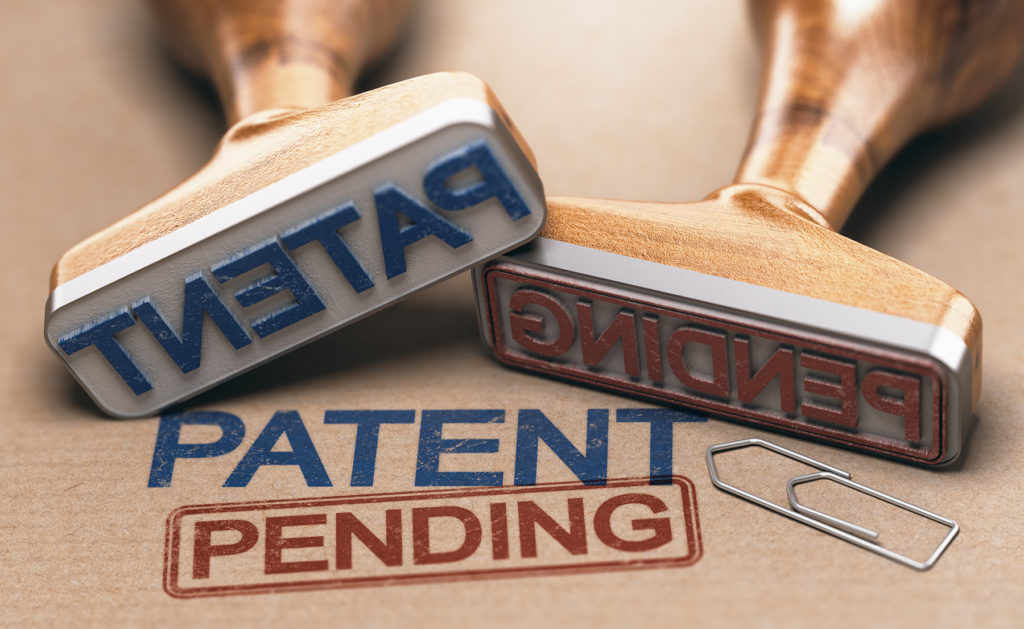You’ve more than likely seen the phrase “patent pending” more than once in your life, but have you ever wondered what it means? The term can be found on anything from cardboard boxes to products already for sale in stores.
While the phrase “patent pending” has no legal bearing, it can help to inform the public that a patent has been filed with the USPTO (U.S. Patent and Trademark Office) for that particular invention. It can prevent potential lawsuits by letting people know their idea will soon be under legal protection.
What Is a Patent?
The very first patent law in the US went into effect in 1790, signed by President George Washington. Patent Law protects what is known as “intellectual property,” meaning something that didn’t exist before someone thought it up. Without Patent Laws, people could steal the ideas of others and take credit for something they did not invent.
There are four types of patents that can be issued for various inventions, and some may be more difficult to get than others.

What Does Patent Pending Mean?
To obtain patent pending status, you must file for a provisional patent. This simple and easy-to-obtain patent allows you to buy yourself time to get everything in order before filing for a design or utility patent.
An earlier filing date allows you to take priority over anyone who may have had the same or a similar idea and filed shortly after you. A patent pending status will last one year and allow you to take time to perfect all the necessary documents for the patent you need.
Design Patent
A design patent protects specific visual characteristics of a manufactured item. This patent may be authorized if the product has a distinct configuration or surface ornamentation. A design patent does not protect the function or use of an object but simply the way it looks.
Examples of items warranting a design patent would be jewelry, clothing, shoes, bags, furniture, dinnerware, packaging, icons, and more. This patent has become more prevalent in recent years, where it has been used for things like emojis and computer software. A design patent typically lasts 15 years and cannot be refiled.
Utility Patent
The most common type of patent is the utility patent, which covers the creation or improvement of a helpful machine, product, invention, or process. Utility patents are one of the most valuable, as they give the filers exclusive commercial rights. Because of this, they can be one of the most challenging patents to obtain.
Once a utility patent has been obtained, it prohibits anyone other than the inventor from making, using, or selling the invention without approval. Utility patents can cost thousands of dollars to acquire, last for 20 years, and can sometimes be extended. Depending on the nature of the product, both a design patent and a utility patent may need to be obtained.
Examples of items warranting a utility patent include engines, computers, brooms, software, and the composition of matter (chemicals, gasses, drugs, etc.). The boundaries of what can receive a utility patent have been challenged in the past decade due to things like internet software and genetic engineering.
Provisional Patent
A provisional patent is a less formal way to prove that the inventor possessed the product and the knowledge to get it to work. A provisional patent requires much fewer requirements and formalities than a design or utility patent and allows you to receive an earlier filing date than if you had waited. Once a provisional patent has been filed, it is in the “patent pending” stage.
A provisional patent is only good for 12 months. During that time, you must file a non-provisional patent application. If the inventor fails to do so, they will lose the filing date and all rights to the product.
Filing for a provisional patent can be critical in ground-breaking inventions, as the US follows the first-to-file law. Where the law used to allow inventors to prove who invented the product first, it now simply goes by who was the first to file for the patent.
Plant Patent
While it might sound a bit outlandish, a plant patent is indeed what it sounds like; protecting the intellectual property of those who create new plants. The creation must be natural and asexual, so it does not include genetically modified plants, bacteria, or tubers.
A plant patent is good for up to 20 years and goes public 18 months after filing. It can include the discovery of new plants in a cultivated area, so long as it is proven to be reproduced asexually, and up to two people can be named as co-inventors. Any royalties obtained from selling the plant would be split equally.
Why Do You Need a Patent?
While you may think your idea isn’t grand enough to need a patent, get one anyway. All too often, when people get a whiff of a good idea, they flock to make their knock-off versions. A patent is a necessary first step if you expect to make any income with your invention.
Increase Profits
Being the first to market a product makes all the difference. If your product is patented, you will be the only one who can legally sell and distribute it. A patent also gives you leeway to allow others to sell your product for fees and royalties, increasing your reach.
Wreck the Competition
A patent prohibits anyone from copying or selling your product or even creating something too similar and selling it. Even big-name companies and corporations will have zero access to your invention and the income it brings in. Before you know it, you’ve cornered the market on your product and found people coming to you for licensing and the right to sell.
Bring In Investors
If you’re trying to pitch the idea of your invention to investors, a patent is a must-have. Potential investors will be much more confident if they’ve seen you’ve already taken steps to secure the rights to your invention and are serious about your product. At the very least, you want it to be patent pending.



















